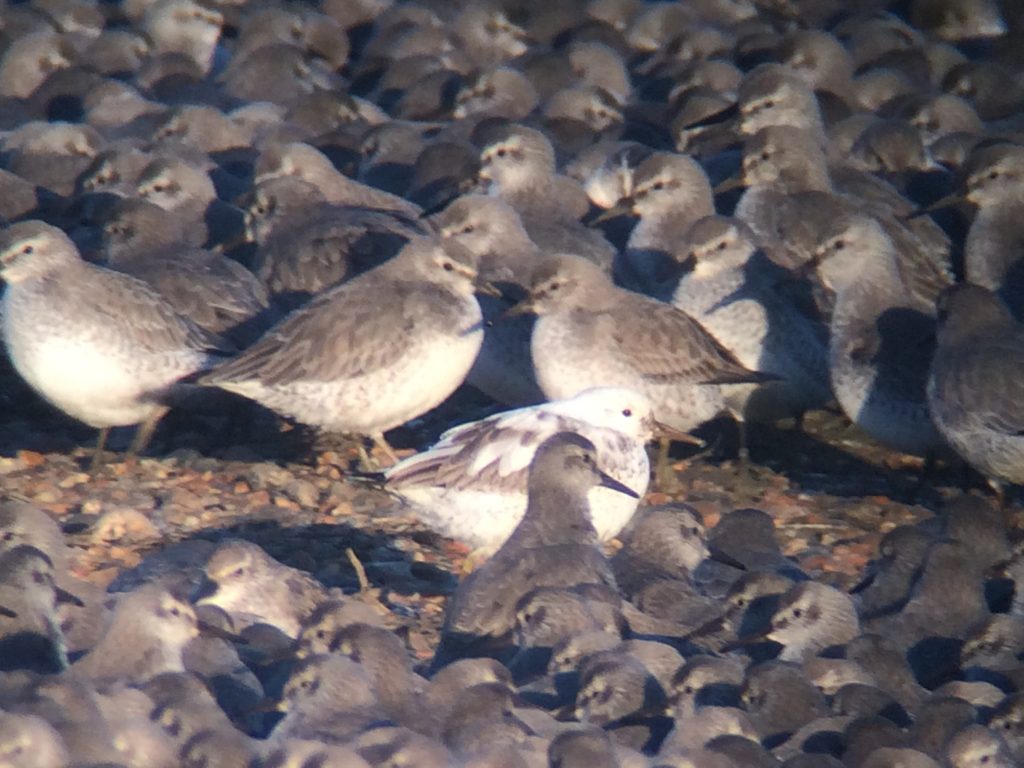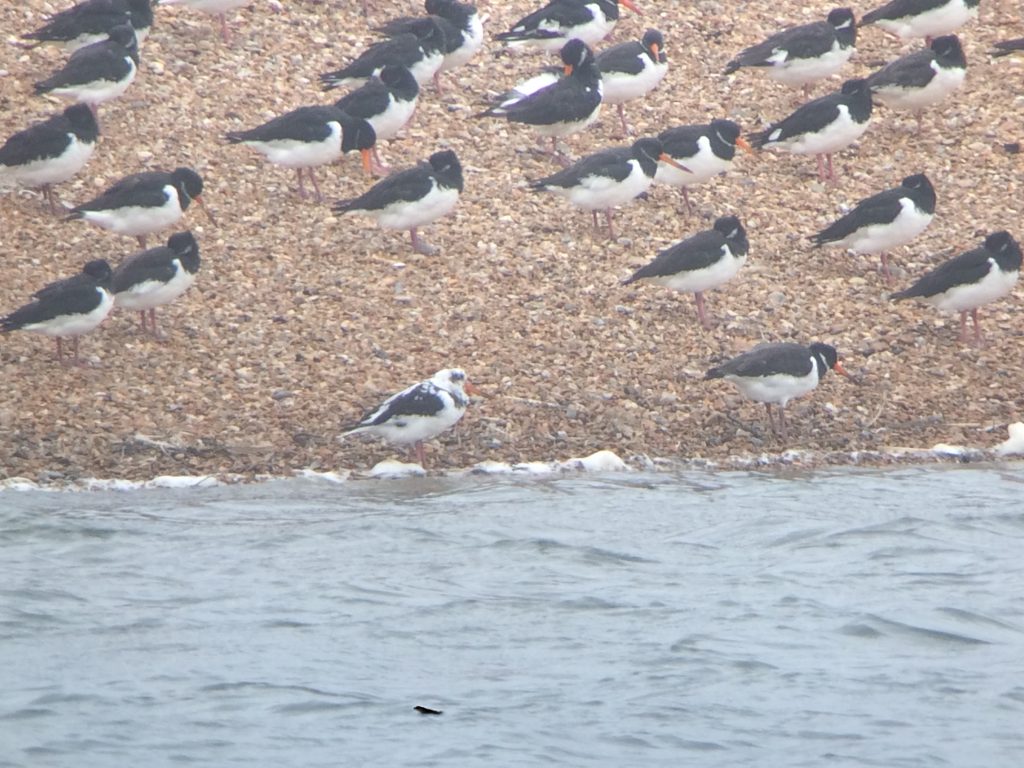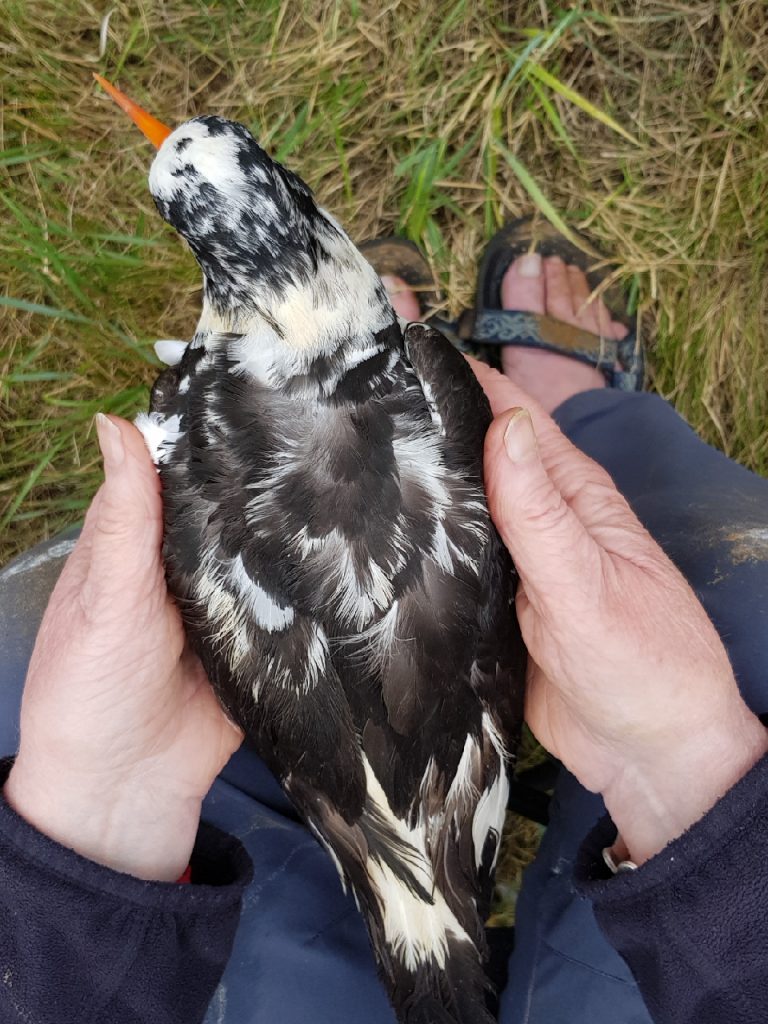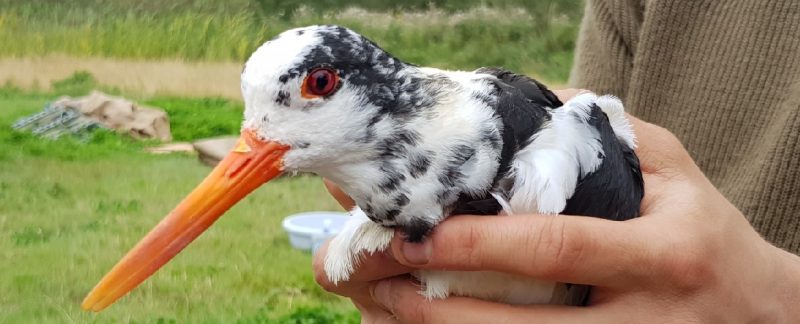We all occasionally see birds with some white feathers and, unless the bird has no colouring at all (albino), we generally put the lack of colouring down to leucism – an absence of pigment in some feathers. However, it’s not that simple – there are number of different types of lack of pigment (van Grouw 2021).


In a recent article in the journal Wader Study, WWRG members Jacquie Clark and Steve Dodd (Clark & Dodd 2022) discuss an Oystercatcher with some white feathers which was recaptured at Friskney last year, having previously been caught on the same site in 2015. The bird had ‘white spotting’ (i.e. some fully white feathers) so the options were leucism or ‘progressive greying’ – and the two are difficult to distinguish. Leucistic birds hatch without melanin in the cells that provide melanin (and therefore colour) to the feathers and the same feathers will be white each time they moult. In ‘progressive greying’ birds develop new white feathers through their life as the pigment-producing cells progressively become inactive.

What makes this Oystercatcher more interesting is that it was previously caught on the same site, when it had no white feathers. So, for this individual, we know it has ‘progressive greying’ rather than leucism – something that is very hard to distinguish unless you have a ringed bird.
References
Clark, J.A. & Dodd, S.G. (2022) A Eurasian Oystercatcher with aberrant plumage. Wader Study 129: 151-152.
van Grouw, H. 2021. What’s in a name? Nomenclature for colour aberrations in birds reviewed. Bulletin of the British Ornithologists’ Club 141: 276–299.

